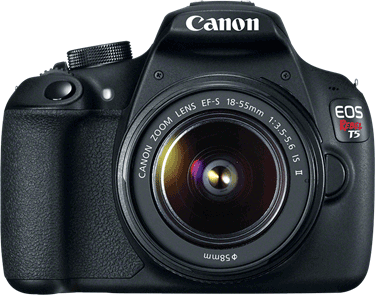I am frequently asked by students about settings I use for taking pictures. It is very easy to simply tell them what settings I used, but it is even more important to understand why I used those settings. After explaining, many feel overwhelmed and discouraged, but photography is like any other art, it takes practice.
I know people who can seemingly play just about any sheet music you put in front of them without much effort, but this is an acquired skill. It helps to have the natural underlying talent, but they have spent years practicing reading sheet music until they get to a point that they can see the notes on the page and their fingers know exactly when and where to go on the instrument. The same thing applies in photography.
Malcolm Gladwell repeatedly mentions the “10,000-Hour Rule” in his great book Outliers. In order to really get good at something it takes about 10,000 hours of practice. The takeaway here is that practice makes perfect.
There are four things that I feel you need to know on your camera that you will change from picture to picture. Spend some time practicing these until it becomes second nature:
Exposure
Many students are overwhelmed by the whole exposure triangle, but it is not really as difficult as most think it should be. I teach my students to think of exposure settings in terms of what do you want to control creatively. If you want to control motion, you are going to set a specific shutter speed and then set the aperture and ISO accordingly. If you want to control Depth of field then you set a specific aperture and then set the shutter speed and ISO accordingly. This is where the priority modes come in very handy.
Knowing which dials control which setting is the key here, and that comes with practice. Set your camera to auto ISO and spend a day shooting in shutter priority and change shutter speeds between shots. Your camera will manage the aperture and ISO for you. Then spend another day in aperture priority and change apertures between shots. Now spend a day shooting in manual and switch between different shutter speeds and apertures between shots. Now turn off The auto ISO and do the same three exercises. Repeat this exercise often and you will get to know what buttons or dials changes these settings so that you can change the settings with little thought.
Exposure Compensation
Sometimes our camera’s don’t get the exposure quite right. Know how to set exposure compensation quickly will help you to make adjustments when you are use the Program, Shutter Priority and Aperture Priority Modes. Spend a day adjusting the exposure compensation between shots and by the end of the day you will be able to change this without taking your eye away from the viewfinder.
White Balance
There are two ways to use white balance, accurate color and creative color. Knowing which white balance modes to use in what situation is another skill that comes with practice. It is important to know how to switch between auto white balance and any of the camera’s presets, but it is also important to know how to set custom white balance as well. To practice, spend a few hours shooting in the different white balance settings and observe how they change the color of your image. Do this under different lighting conditions and you will start to understand what white balance does as well as know how to change it. Practice setting custom white balance until you can do it with little thought. White balance does not have to be the mystery that most think it is. White balance is a control that we use to manage the color in our images.
Focus
There are two controls we need to know how to change when it comes to autofocus. The first is the focus mode. Most cameras give you three choices: AF-S or One Shot, AF-C or AI Servo and AF-A or AI-Focus. If you are shooting a still subject you will use the AF-S or One Shot focus mode. If you are shooting a moving subject you will use the AF-C or AI-Servo mode. I personally never use the third mode as the camera may not switch in time or might switch when I don’t want it to. Practice switching between these two modes. With enough practice your fingers will know right where to go.
The other focus control is selecting which focus point to use. For the most part, I use the center focus point, and use the focus lock and recompose method. However, there are times when it is faster, better, easier to switch the focus point. Practice changing the focus point on your camera and just like the other settings, it will become a natural process for you when taking pictures.
Getting to know your camera will not only enable you to control it more effectively, it will also make the photography experience more rewarding since you will not be overwhelmed by the many controls on your camera. Be sure to repeat these exercises frequently so that you do not lose the skill.
I remember taking piano lessons when I was a young boy, and my teacher and parents kept hounding me to practice. This applies to any art or skill. If you want to improve at anything in life, practice, practice, practice.

